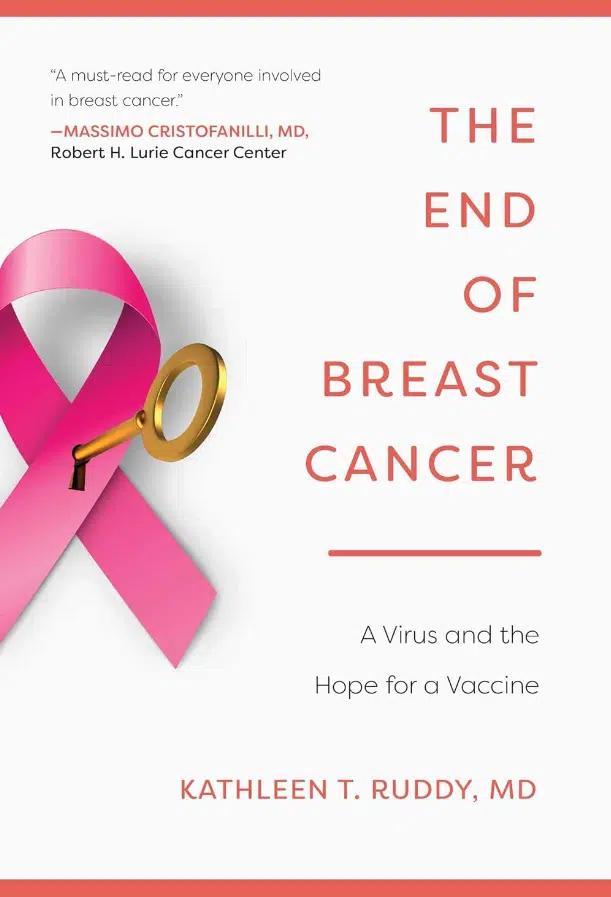Most cancer solutions are anything but practical. Emerging evidence suggests there are many alternatives to the traditional methods – and they could reduce cancer risk significantly.

The current primary methods for treating cancer – radiation, chemotherapy, and invasive surgeries – are intense and often daunting. It raises an important question: where are the practical solutions for preventing cancer from developing in the first place?
That’s the question a growing number of researchers, doctors, and surgeons have started asking. And it’s a good thing they are, because cancer rates have never been higher:

Today, we’re going to explore an emerging perspective, backed by evidence, and unearthed by some of the top researchers on the planet. One of those researchers is FLCCC’s own Dr. Paul Marik. Speaking to host Jan Jekielek on American Thought Leaders, Dr. Marik reveals a striking insight:
“The bottom line is that 30 to 40% of cancers are preventable. Just through simple lifestyle changes and supplements, you can reduce your risk of cancer.”
In his monograph, “Cancer Care: The Role of Repurposed Drugs and Metabolic Interventions in Treating Cancer,” posits cancer as a metabolic, not genetic, disease. This shift in understanding suggests that we have more control over our cancer risk than previously thought, through manageable changes in lifestyle habits.
As we delve deeper into these innovative perspectives on cancer prevention and treatment, it was only fitting that we were joined at our Winter 2024 FLCCC conference in Phoenix. At the conference, we welcomed the renowned Dr. Kathleen Ruddy and Dr. Nathan Goodyear along with FLCCC’s Dr. Paul Marik for an insightful panel discussion, exploring these practical cancer solutions in greater depth.
There, the group made a stunning announcement: in partnership with FLCCC, Dr. Ruddy is launching a long-term study of cancer and repurposed drugs. This medical research has the potential to usher in a revolution in cancer care. We couldn’t be prouder to work with Dr. Ruddy on such a worthy cause.
Now, let’s dive in and learn more about some innovative and practical cancer solutions.
1: Cancer is a Metabolic Disease
Most people think cancer prevalence can only be predicted by genetics and environmental factors. But there’s another feature of cancer we’ve known about for a long time. As Dr. Marik puts it:
“Otto Warburg, in 1928, discovered that all cancer cells are metabolically dysfunctional and require glucose as their prime source of fuel. Cancer cells cannot use their mitochondria to generate energy. So, the consequence of that is if you deprive the cancer cell of glucose, it actually promotes cell death. So, if you can starve the cancer cell by limiting glucose, you’re going a long way in controlling cancer.”
While it’s still true that different types of cancer develop for different reasons, emerging evidence suggests many ways to fight cancer at the metabolic level. For example:
- Low-carb, high-fat, ketogenic diet
- Time-restricted eating (intermittent fasting)
- Exercise, stress reduction, and quality sleep
- Vitamin D3: 20,000-50,000 IU daily
- Green Tea catechin, epigallocatechin-3-gallate (EGCG): 500-1000 mg/day
The goal of metabolic adjunctive treatments is to “starve the cancer cell” by changing energy pathways that are important to cancer cells. Studies like this one suggest that simple interventions like vitamin D and light exercise significantly reduce cancer risk in adults over the age of 70.
Learn more about practical cancer prevention methods by watching the video below:
2: Prevention and Early Detection is Critical
For cancer, prevention really is the best medicine. As we suggested earlier, it’s a good idea to do what it takes to reduce your risk of getting cancer in the first place.
Dr. Kathleen Ruddy is the founder of the Breast Health & Healing Foundation. Her foundation’s stated mission is “to discover the specific causes of breast cancer and to use that knowledge to prevent the disease.” Dr. Ruddy is a breast cancer surgeon by training and the author of several books, including “The End of Breast Cancer.”
In her book “Of Mice and Women,” Dr. Ruddy explores the hypothesis that breast cancer has a viral trigger. If true, prevention of breast cancer could potentially reach a new level.
The important factor that Dr. Ruddy wants the world to know is that the research is not done when it comes to breast cancer or any other type of cancer for that matter.
Of course, while the research is ongoing, you can still make sure to handle the basics:
- Lifestyle changes that can reduce the risk of cancer (diet, exercise).
- Reduction of harmful habits like smoking or excessive alcohol consumption.
- Prioritizing cancer screenings and early detection.
3: Repurposed Drugs in Cancer Treatment
We all know that high doses of chemotherapy come with side effects. Radiation therapy uses high doses of radiation to kill the cancer cells – but also damages healthy cells.

Depending on the type of cancer, there are a wide range of treatments available:
- Stem cell transplants
- Hormone therapy
- Bone marrow transplants
The trouble with most cancer treatments is that they often require a tradeoff — killing the cancer and hurting the patient. Since Dr. Marik was already looking at repurposed drugs to treat COVID-19, it wasn’t long before he applied the same lens to cancer treatment.
What he found was a huge body of evidence showing the efficacy of repurposed medicines for cancer. There is even a database (called “ReDO“) that highlights hundreds of drugs with cancer-fighting potential.
That discovery shattered Dr. Marik’s previously held belief that the medical system always has the patient’s best interests at heart:
“Obviously, cancer is a big business, and it’s highly profitable. The average cost of chemotherapy for a patient is around $100,000. Big pharma makes a lot of money, and the oncologists in this country make a lot of money. The drugs we are talking about are cheap, off-patent drugs, so you can understand this narrative.”
4: Complementary and Integrative Solutions
Cancer is a complex disease. For that reason, it requires an integrative solution.
At the forefront of that school of thought is Brio-Medical’s medical director, Dr. Nathan Goodyear. Dr. Goodyear is a pioneer in the use of insulin potentiation therapy, high-dose vitamin C, and hyperthermia for the integrative treatment of cancer.
At its core, Dr. Goodyear’s integrative approach is about teaching the body how to heal. And if you saw his presentation at FLCCC’s Spring 2023 conference, you’ll know that doubling down on the body’s ability to protect itself has never been more important.
In that talk, he detailed how post-COVID cancer is a disease driven by spike protein, whether by injection or infection. Connecting the dots between spike protein and cancer points directly to increased metastasis, morbidity, and mortality.
If it’s true that excess spike protein is causing cancer, then common sense says we should eradicate the spike protein at all costs. Here’s the problem: the average oncologist isn’t thinking about spike protein at all, let alone its cancer-causing potential.
That’s just one example of how diagnosing and treating cancer requires a personalized approach. To effectively treat patients, the root causes must be identified and properly addressed.
Wrapping Up
The landscape of cancer treatment and prevention is witnessing a transformative shift. With a focus on metabolic factors and practical lifestyle changes, experts like Dr. Marik, Dr. Ruddy, and Dr. Goodyear are leading the way toward more accessible and effective strategies against cancer and sharing their expertise at events like the FLCCC Conference.
For more health tips and guidance, be sure to check out our Tools & Guides section, or our always informative blog.







